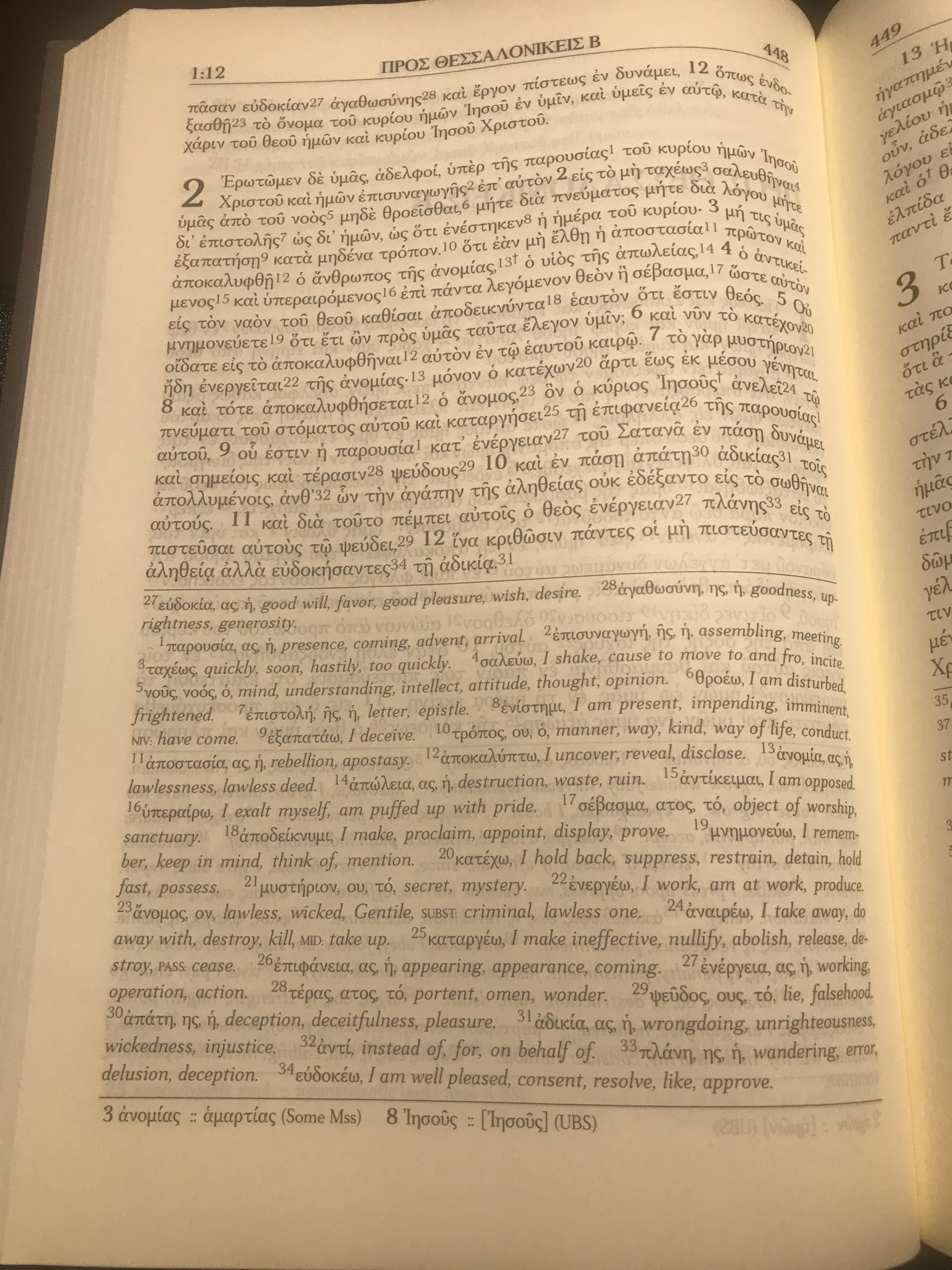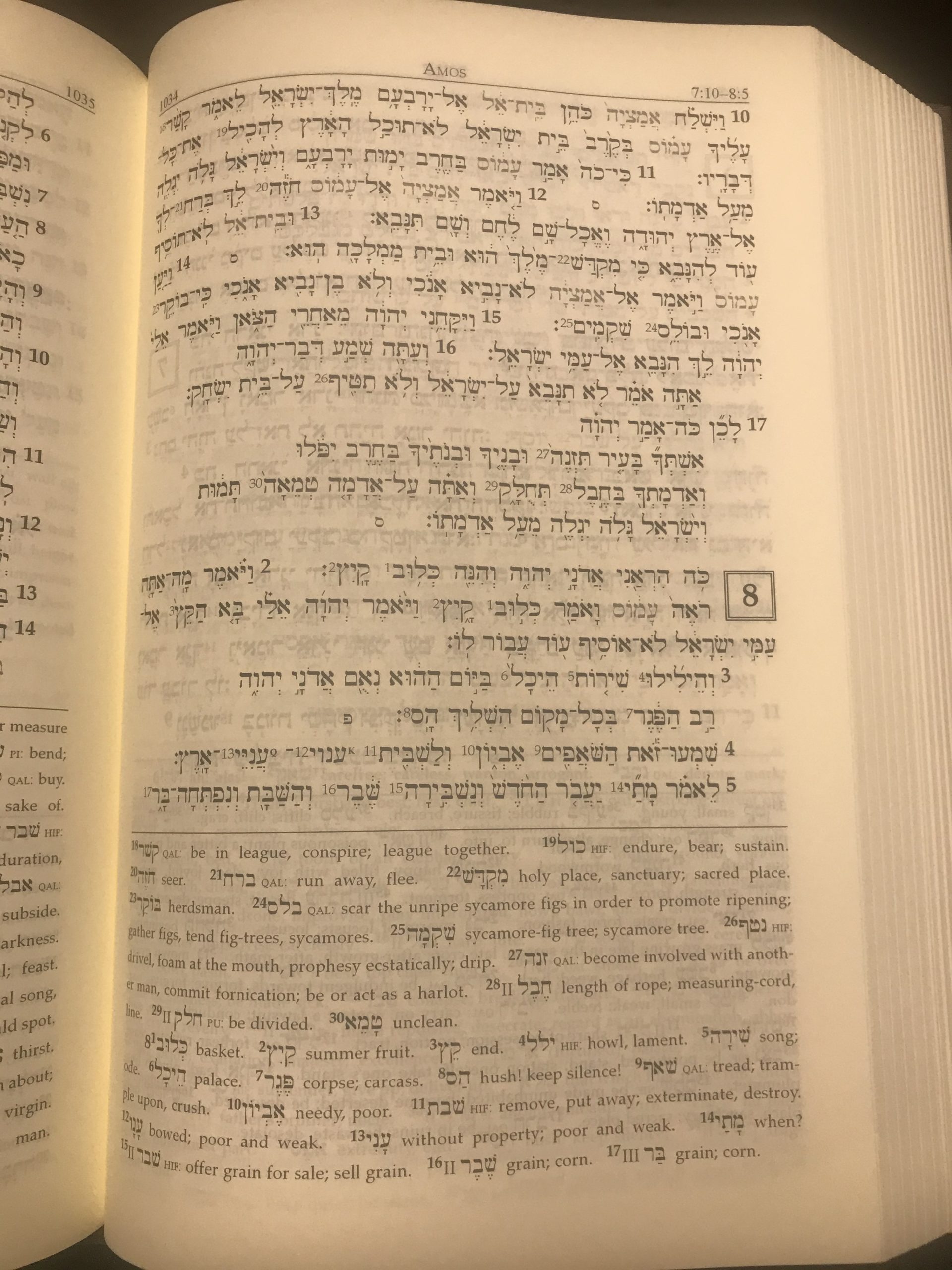Book Review: A Reader’s Hebrew and Greek Bible, 2nd ed. (Zondervan Academic)
Because I am involved in teaching the biblical languages at the seminary level, I am regularly asked about Greek and Hebrew Reader Bibles. I have not had much experience with Reader Bibles so I asked Zondervan to let me review their 2nd edition of A Reader’s Hebrew and Greek Bible. I hope this review will be helpful both to my students as well as the academically-inclined reader of the blog.
The Aesthetics, Bulk, Weight, etc.
First of all, I was impressed with the texture of the hard cover and the quality of the binding. Granted I am no expert on book bindings, but it seems very solid, and lays flat immediately. It is one of the more annoying things to have a book that doesn’t lay flat, so this is much appreciated!
It is 4 LBS, and contains 2272 pages. It seems comparable my Biblia Sacra which is about 3 LBS, and has 2540 pages. The width and weight are about the same, though the Zondervan Reader’s Bible is a little longer. The major difference would be the content, since the Reader’s Bible contains glosses for words, whereas my Biblia Sacra has the textual critical apparatus at the bottom of the page.

I would also be lying if I said I did not love the new book smell! But, I think you can get that most places and its probably not unique to this Reader’s Bible.
The Content and Layout
Because this Reader’s Bible contains both Greek and Hebrew, the Hebrew starts from the right and the Greek starts from the left. In the middle of the Bible you have the Hebrew glossary (which contains all Hebrew words occurring 100 times or more) and the Greek glossary (which contains all Greek words occurring 30 times or more).
The Greek text is the same as a UBS4/NA27, although where different from the UBS5/NA28 a footnote is included with the new reading. The flowing Greek text is on the top of the page, with footnotes for any Greek word which occurs 30 times or less in the NT. These footnotes are then given multiple definitions which could work in the context of the passage. At the very bottom of each page are any pertinent textual critical notes (obviously far less than you would have in UBS/NA).

The Hebrew text follows the current BHS (Westminster Leningrad Condex). Similar to the Greek, the Hebrew text is free flowing with footnotes marking any words which occur 100 times or less. For the Aramaic portions of Scripture, words used 25 times or less are footnoted. There are no textual critical notes on the Hebrew pages, but names of persons or places are made evident in the text by a slight lightening of the font.

Summary of Features
- Complete text of the Hebrew and Aramaic Bible, using the Westminster Leningrad Condex.
- UBS4/NA27 Greek text with footnotes comparing any difference to UBS5/NA28.
- Foonoted definitions of all Hebrew words occurring 100 times or less; 25 times or less for Aramaic words.
- Footnoted definitions of all Greek words occurring 30 times or less.
- Lexicons of Hebrew words that occur 100 times or more, and Greek words 30 times or more.
Concluding Thoughts
I am not a fan of using a Reader Bible while learning the language. But, I know some people do. Personally, I can see the tremendous value for after classes. For example, when you are interested in doing some devotional reading and not wanting to have to take the time to look up new words you will run into, or refresh old words which are just out of reach of recollection. As far as Zondervan’s 2nd edition of the Greek and Hebrew Reader, I am very impressed by the book quality, and I think it would be a worthwhile investment for many post-school students who want to continue to read Greek and Hebrew. It looks like a Bible that could last you a long time AND make it easier to keep up on your Greek and Hebrew after school.